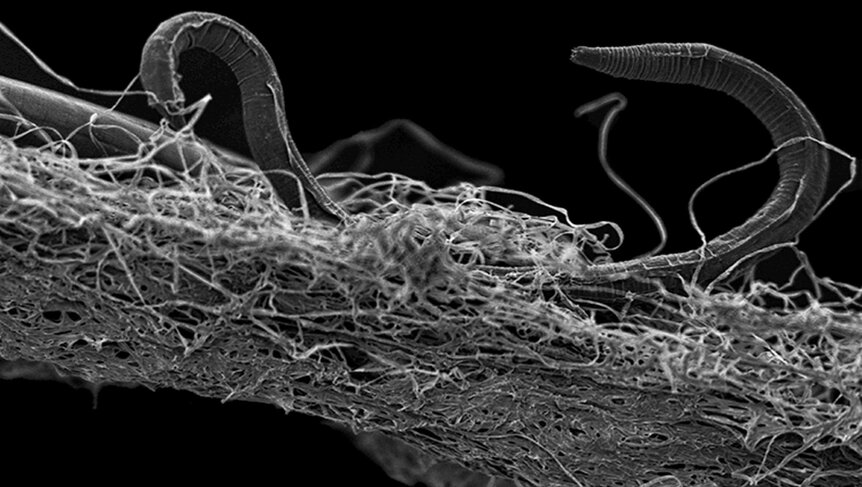Create a free profile to get unlimited access to exclusive videos, sweepstakes, and more!
Scientists Revive Worms Frozen for 46,000 Years in Siberian Permafrost
Nematodes frozen for 46,000 years revived in a lab. What could go wrong?
John Carpenter’s 1982 horror masterpiece The Thing took viewers to Antarctica, one of the last remaining wild frontiers on Earth. There, helicopter pilot R.J. MacReady (Kurt Russell) and the rest of his crew encounter a murderous alien entity frozen in the Antarctic permafrost. The Thing has earned a place in the hallowed halls of perfect horror flicks and serves as a cautionary tale that if we find something frozen in the ice, maybe we should leave it there.
An international team of researchers working primarily in Russia and Germany apparently never saw The Thing or else weren’t persuaded by its warning. After finding a previously undiscovered species of worm frozen in Siberian permafrost, they went ahead and revived it. Their findings have been published in the journal PLOS Genetics.
Ancient Worms in the Siberian Permafrost
Researchers came across the frozen worms a few years back, tucked into what was once the burrow of a subterranean mammal. They were found about 40 meters down, buried in the ice, where they had been for tens of thousands of years.
RELATED: Microscopic Animals from Siberia’s Icy Permafrost Revived After 24,000 Years
Once the sample was back in the lab, the ice was allowed to melt, and the worms were rehydrated. Almost immediately, they started wiggling around and pumping out babies. While the worms were busy making up for lost time, researchers performed genetic analysis, revealing the worms as a previously unknown species of nematode, now dubbed Panagrolaimus kolymaenis.
Scientists also performed radiocarbon dating on plant matter contained in the sample. They confirmed its date of approximately 46,000 years, and that it hadn’t been thawed during the interim.
Reviving Worms After a 46,000 Year Nap
The worms survived through a process known as cryptobiosis. It’s something other species of nematode do, producing a special kind of sugar to keep cellular damage at bay when conditions are fierce. Cryptobiosis allows them to slip into a kind of suspended animation and enjoy extended slumbers until the world becomes more accommodating.
During cryptobiosis, signs of life fall away and even metabolism is undetectable. That’s how a worm can hang out on the biological pause screen for years at a stretch. Although, scientists weren’t aware that they could remain in suspended animation for so long. The previous nematode record holder was frozen in moss for about 25 years before being revived. These ancient wormcicles absolutely shattered that record.
RELATED: Superworms Can Eat and Digest Plastic
It makes a certain amount of sense that they would be good at enduring extreme environments. Nematodes are the most common animals on the planet, accounting for roughly 80% of everything crawling over the planet’s surface. Scientist E.O. Wilson once described them as so abundant that “if all solid materials except nematode worms were to be eliminated, you could still see the ghostly outline of it [the Earth] in nematode worms.”
A recent estimate places their numbers in the quintillions. There are an estimated 57 billion nematode worms for every single living human on Earth, plus at least a few frozen ones waiting for their next moment in the Sun.
Tragically, the frozen worm’s second at-bat was cut short. After 46,000 years in the ice and a few weeks in the lab, the worm died. Scientists are now studying its living offspring in hopes of learning more about how they survive such inhospitable conditions for so long.
For far scarier research, catch The Thing, available now from Universal Pictures.































